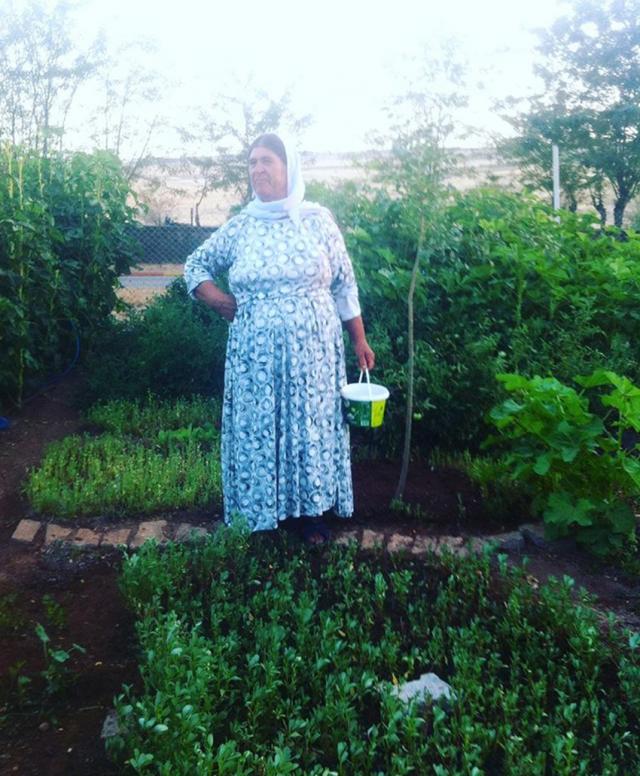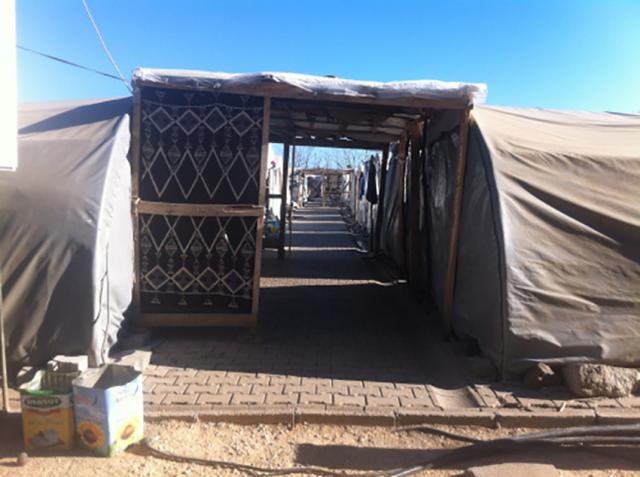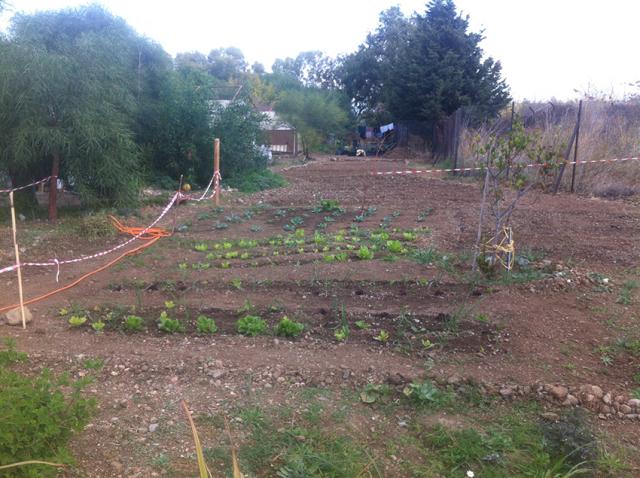Planetary Migration under Anthropocene: Crisis and Solidarity
Crisis
Before the epidemic crisis started, the NGO AlarmPhone, networking in many cities, was helping migrants to reach the boat “Mediterrania” off the coast of Malta. On the other hand, undocumented migrants who were suffering under their living conditions were trying to cross from Turkey to Greece and were pushed back and forward violently from both sides. The situations of undocumented migrants who are not able to receive healthcare or aid from institutions are becoming more severe. In Turkey, both undocumented migrants and registered Syrian refugees are precarious labourers, mainly working on agricultural farms or construction sites. Migration and refugeehood take place on planetary levels in which labor conditions, levels of precariousness, and relation to landscapes are connected with one another. Planetary here does not refer only to the coexistence of various inter-connected scales on earth but also to a contemporary spatial approach to earth, and the effects of climates and ecological catastrophes that we are sharing. Uneven neoliberal urban transformation that leads to spatial segregation among vulnerable communities, colonial extraction of landscapes, using chemicals in agricultural lands in order to evict villages, and civil wars; such examples are structural violences that harm the most vulnerable migrant communities. Migration policy, border politics, and surveillance infrastructures are getting more severe under the current state of emergency arising during the Corona pandemic. Not only states but any hegemonic mechanism establishes severe territorialization that causes the most vulnerable populations to suffer.
Planetary co-existence is often explained through the debate of the Anthropocene. Humans as the primary agents of shaping, employing infrastructural extraction of landscapes and territorializing all human and non-human elements within it is described as the main era of the Anthropocene. Thus climate change and extinctions are some of its outcomes. As Chakrabarty explains, “Even though it refers to a new period in the planet’s geological history and therefore to geological time, the term ‘Anthropocene’ was used from its very inception as a measure not of geological time but of the extent of human impact on the planet.” (Chakrabarty 2018: 6-7) Human impact is on a planetary scale in terms of the extraction of landscapes that can be explained with slavery and European hegemonic colonial histories. Since centuries, colonial and capitalist history has been operating through the segregation and discrimination of race, gender, and climate on indigienous land. Nowadays, the formation of social inequalities on a planetary level increases the scarcity of food, contaminated natural resources and lack of housing in migrant landscapes. One of the best examples to describe this narrative of climate migration on a planetary scale takes place in Amitav Ghosh’s latest novel, Gun Island. In the novel, we follow Bangledeshi refugees who have to leave the Sundarbans region because of lack of livestock in the delta between India and Bangladesh, since the water is getting contaminated by industrial forces and the soil is eaten by the floods. As they have no jobs to sustain their livelihoods anymore, they start a refugee odyssey to Europe by trying to cross the Mediterranean sea. The two migrants face many obstacles crossing through Turkish and African borders in the hands of human traffickers. Following the refugees’ trajectory, the novel covers geographies and territories from the Indian delta to Iraq and Turkey, to Africa and to the Mediterranean sea; all the while, the two Sundarbans use chat messages, phone locations, and online thresholds to navigate their way.
A passage for undocumented migrants since the 1990s, the eastern border of Turkey faced a intense migrant flow as a resultof the Syrian civil war that has been ongoing since 2013. Many refugee camps were officially established by the state and the UN in the southeast region. Furthermore, beside official state-run-camps, self-organized camps supported by solidarity groups, NGOs, and local municipalities appeared as well. Many camps were designed and constructed either in waste landscapes, for example near the towns of Midyat, Urfa, Antep or in temporarily existing spaces like the Mardin local bus terminal or the recreation picnic area of Cinar near Diyarbakir. Infrastructure like water and sewage systems, electricity, public spaces, food shops and other logistics of dwelling were established within the camps and transformed the landscape. Most migrants were engaged as daily laborers in the agricultural lands around those camps. Thus, since 2013, the new wave of migration from Syria (and the ongoing flow of undocumented migrants), consequently affected the precarious agricultural and construction labor load in Turkey (Tan 2016). The effects of war and the active renegotiation of borders demands a transformation in the way that spatial infrastructure is approached and worked with, not just as the functional and scalar threshold of architecture, but also as mechanisms that form part of what Povinelli calls geontologies of landscape (Povinelli 2018). According to Povinelli, both “geos” (non-life) and “being” (ontology) are “currently in play in the late liberal governance of difference and markets,” in response to which she outlines new figures, tactics, and discourses of power by proposing a definition of biopolitics without a separation between life and non-life. According to this argument, landscapes and infrastructures function as instrumentalizing colonial extraction. The control of landscapes and infrastructure through administrations leads to surveillance operations. So, how then can we approach infrastructural landscapes, also within cities and towns, that have been shaped by war and migration (such as camps).
According to some thinkers, the Anthropocene era already started centuries ago in the wake of racist extraction of landscapes and slavery in various territories. Geographer Yusoff refers to the “black anthropocenes,” claiming that: “...an inhuman proximity organised historical geographical extraction, grammars of geology, imperial global geographies and contemporary environmental racism”(Yusoff 2019: 3). Dispossession, property, extraction are related to racial bodies and landscapes. Defining vulnerabilities within the anthropocene, the planetary migrant landscapes serve as trajectories of narratives that relate to dispossession and extractions, operating through necropolitics1. In October 2019, the UN Human Rights Council declined the application of Ioane Teitiota, who had applied as a climate refugee due to the global warming of the island of Tarawa, where fresh water has become scarce due to saltwater contamination and the rising sea level has started to harm the housing conditions (UN report, October 2019). This was the first time that the UN officially declined a refugee application due to the effect of climate change. In this case, we realize more than ever that climate change is directly related to climate justice on a planetary scale, where all humans and non-humans are connected, where they are all interdependent. Being in kinship and solidarity with not only humans but non-humans is explained by Haraway when she writes: “The order is reknitted: human beings are with and of the earth, and the biotic and abiotic powers of this earth are the main story” (Haraway 2016: 55). In contrast to pessimistic discourses on the Anthropocene, Haraway calls us to rethink our kin-making within multispecies in our all precarious conditions. We can create new narratives, we can react and imagine a sympoiesis (making with), a living together. Going back to Gosh’s novel, myths, animals, plants, and clouds are the main elements creating a co-existence of trajectories and edges of survival of the two refugees’ odysseys.
However, how can we still engage in solidarity and new narratives of planetary inder-dependencies in this era? How can we relate to co-existences of solidarities in cities, borderlines, and refugee camps? How can we transform migratory necropolitics?
Solidarity
Currently, the virus represents not only the outcome of the human harm and extractions on earth in the anthropocene era as a hyper-object but more importantly reminds us how we organize and sustain grassroot solidarity practices under such an epidemic control and its state of exception. Instead of instrumentalizing temporary aid, solidarity groups and projects aim to foster bases of shared vulnerability and precariousness that represent an unjust outcome in our countries. Using also different means of medium and representation as well research based artistic practices connects “the struggles through the landscapes of interconnectedness”. As Genc indicates, migrant solidarity is an arena of struggle, which he exemplifies with the unsustainable activities of Istanbul-based Göçmen Dayanışma Ağı (EN: Migrant Solidarity Network) (Genc 2017). Migrant struggle deals with many obstacles as well as possibilities that lead to other solidarity initiations in different formats.
One example is the initiative Tarlabaşı Solidarity, which supports African immigrants in Istanbul and the surrounding areas, who don’t face the same conditions as Syrian refugees in Turkey. On the other hand, Mesopotamia Ecology Association in Diyarbakir created numerous seed exchanges and organized planting in temporary refugee camps in the region in 2016. Kapılar Collective (Kapılar Kolektifi) in Izmir hosted several workshops for children as well as cooking workshops with refugee women between 2016-2018, and still continue to provide aid and protection for undocumented migrants. These temporary and permanent practices are basically aimed at easing the vulnerable life of refugees in precarious urban areas. Similarly, in temporary camps in the Southeast of Turkey between 2013 and 2017, cultivating vegetable gardens was also an everyday practice that strengthened the collective survival. Another example is PIKPA Solidarity on Lesvos island, a self-organized camp that serves as a safe haven for the refugees coming by boat. Whereas Moria camp resembles a detention camp, PIKPA is a place of sharing care and providing safe hospitality. The squat hotel City Plaza, which hosted many refugee families, was not only a temporary place of hosting but also an experience of how to run an autonomous infrastructure in the middle of the city of Athens under economic precarity and racist attacks. The Silent University is a fictional university, which provides it branches with a pedagogical platform that serves as an arrival infrastructure where asylum seekers, undocumented migrants, and refugees can share their experiences and knowledge. The branches of The Silent University in Stockholm, Ruhr and other places are run by refugees, and provide courses and online learning during the pandemic.
“The Residuals (Geride Kalanlar)” is a video documentary by Artikisler Collective that documents various solidarity activities by following refugees from Syria to Turkey, to Greece, the Balkan, and Europe: “The Residual recounts the narratives of refugees and migrants in both new state-run refugee camps and housing initiatives started by migrant solidarity movements throughout the south-eastern region in Turkey.” The visual narrative aims to document practices of daily commoning, showing how social relations are forged during the process of migration. MANY - Keller Easterling is another visual compilation that consists of field research on refugee solidarities from different parts of the world. MANY is: “...a research and design that assembled almost 100 representative entries for the platform. Each of the entries point to thousands of existing visa sponsors in education, agriculture, medicine, and other industries as well as a strategy for aggregating these networks and strengthening them with spatial variables.” MANY reveals several forms of migration, from undocumented to asylum to environmental migration as well as visa policies and labor conditions on different institutional scales. The London-based architecture research center Forensic Architecture continues to create visual evidence of migrant necropolitics by making the actors and agencies in this struggle clear. Recently, FA revealed investigations of the pushback (informal forcible removals) on the Evros/Meric river between Greece and Turkey that coincides “...with escalation of violence at the border, diplomatic conflict, and the arrival of coronavirus in the region.” Furthermore, FA revealed maps of migrant deaths and attacks on boats in the Mediterranean sea. FA uses architectural methodology to visualize events and provide analytical evidence of structural violences. FA investigates state and corporate violence, human rights violations, and environmental destruction. Moreover, the FA team engages with survivors and visually explores their memories of trauma. FA represents an unusual side of the migrant struggle in that it works with architectural reconstructions as evidence in the international legal arena.
In summary, the state of emergency surrounding epidemic control in our current virus crisis reveals the severity of capitalist everyday life and extraction of landscapes on earth that directly projects itself onto planetary migrant landscapes. Healthcare, labor conditions, racist policies, thick and (as well) fluid border zones of surveillance infrastructures are the outcome of such crisis conditions. This situation demands “mutual recognition and solidarity” (Bagnato 2020) and a recognition of the necropolitical systems on earth that define migrants and refugees as disposable entities without life. Acting against it within the sustained minor solidarities as entangled collective survival can connect migrant trajectory landscapes on a planetary scale.
Footnote
1Mbembe often described necropolitics as a “life to the power of death.” Necropolitics is about the reconfiguration between resistance, sacrifice, and terror, and as he writes, all conditions are more blurred under necropolitics. For him, “…to exercise sovereignty is to exercise control over mortality and to define life as the deployment and manifestation of power.[...] I have put forward the notion of necropolitics and necro-power to account for the various ways in which, in our contemporary world, weapons are deployed in the interest of maximum destruction of persons and the creation of death-worlds, new and unique forms of social existence in which vast populations are subjected to conditions of life conferring upon them the status of living dead.”
Bibliography
Dipesh Chakrabarty, Anthropocene Time, History and Theory, Volume 57, Issue 1, 2018, 5-32. (doi.org/10.1111/hith.12044)
Amitav Gosh, Gun Island, Farrar, Straus and Giroux, 2019
Achille Mbembe “Necropolitics”, Trans.L.Meintjes, Public Culture, 15 (1): 11-40, 2003. (further reading: Necropolitics, Duke Press, 2019)
Pelin Tan, “Architecture in crisis exception as a Form of Decay” (Arquitectura en crisis La excepción como una forma de decadencia ), ARQ (Santiago) no.92 Santiago, 2016 (dx.doi.org/10.4067/S0717-69962016000100013)
Elizabeth A. Povinelli, Geontologies - A Requiem to Late Liberalism, Duke Press, 2016
Kathryn Yusoff', A Billion Black Anthropocenes, University of Minnesota Press, 2019
Donna J. Haraway, Staying with the Trouble: Making Kin in the Chthulucene, Duke University Press
Fırat Genç, “Türkiye’de Göçmen Mücadelesinin İmkân ve Sınırları: Göçmen Dayanışma Ağı Deneyimi”, Sosyal Hizmetleri Yeniden Düşünmek içinde, N.Ş. Taşğın, U. Tekin, Y. Ahi (ed.), Nika Yayınevi, Ankara, 2017.
Andrea Bognato, “Staying At Home”, e-flux architecture, May, 2020
www.e-flux.com/architecture/at-the-border/329404/staying-at-home
(Last accessed 15 May 2020)
UN Report.
https://tbinternet.ohchr.org/Treaties/CCPR/Shared%20Documents/NZL/CCPR_C_127_D_2728_2016_31251_E.docx
(Last accessed 15 May 2020)






